Frequently Asked Questions:
Our Mission
The Castaways Against Cancer is focused on funding cancer research and honoring those who have fought the fight.
Our DNA
The men and women who make up the Castaways Against Cancer are a diverse group from all walks of life. The team is comprised of Paddlers, Cyclists, Runners, and Landlubbers who all further their mission in their own way.
The paddlers have historically been made up of teachers, firefighters, lawyers, bankers, scientists, logistics specialists, non-profit executives, restaurant owners, accountants, and we’ve even had celebrity wildlife experts as well as a renowned artist. The cycling team is comprised of financial consultants, college students, teachers, media editors, oceanographers, associate TV producers, advertising creatives, former restaurant owners, and accountants. Our Runners are school teachers and in the media field. Our Landlubbers are lawyers, retired school teachers, communication directors, and CPAs. Together, as a group from all walks of life, we come together under a common mission.
We come from everywhere. The Castaways have lived all over Florida, as well as New Jersey Washington, Texas, Mississippi, North Carolina, Illinois, and New York. Most have roots or connections to South Florida, but all have come together for a shared mission.
We invite you to get to know our crew and learn more about the history of the Castaways. See for yourself how one man's passion and vision brought together a group of strangers to form this amazing team.
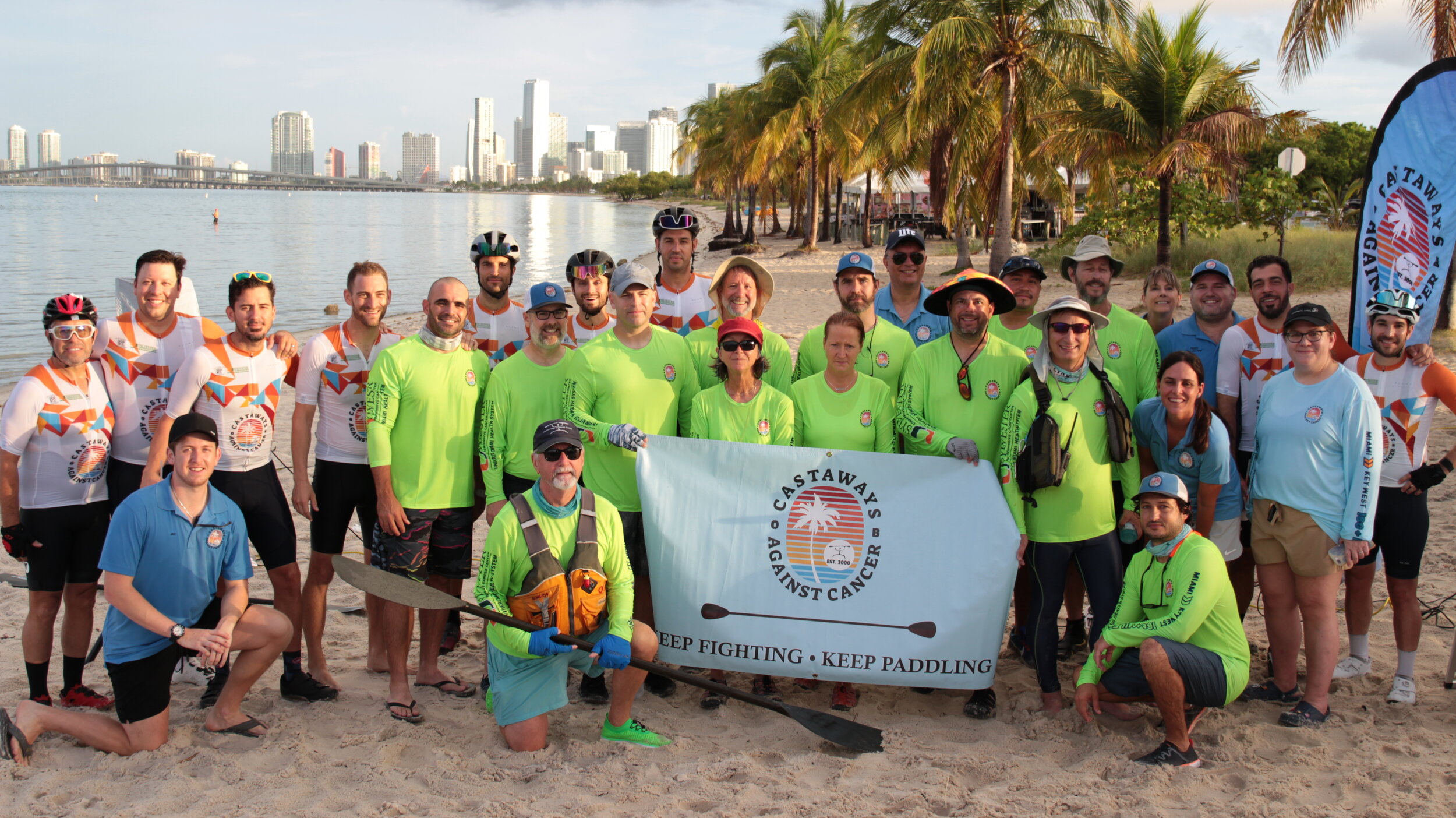


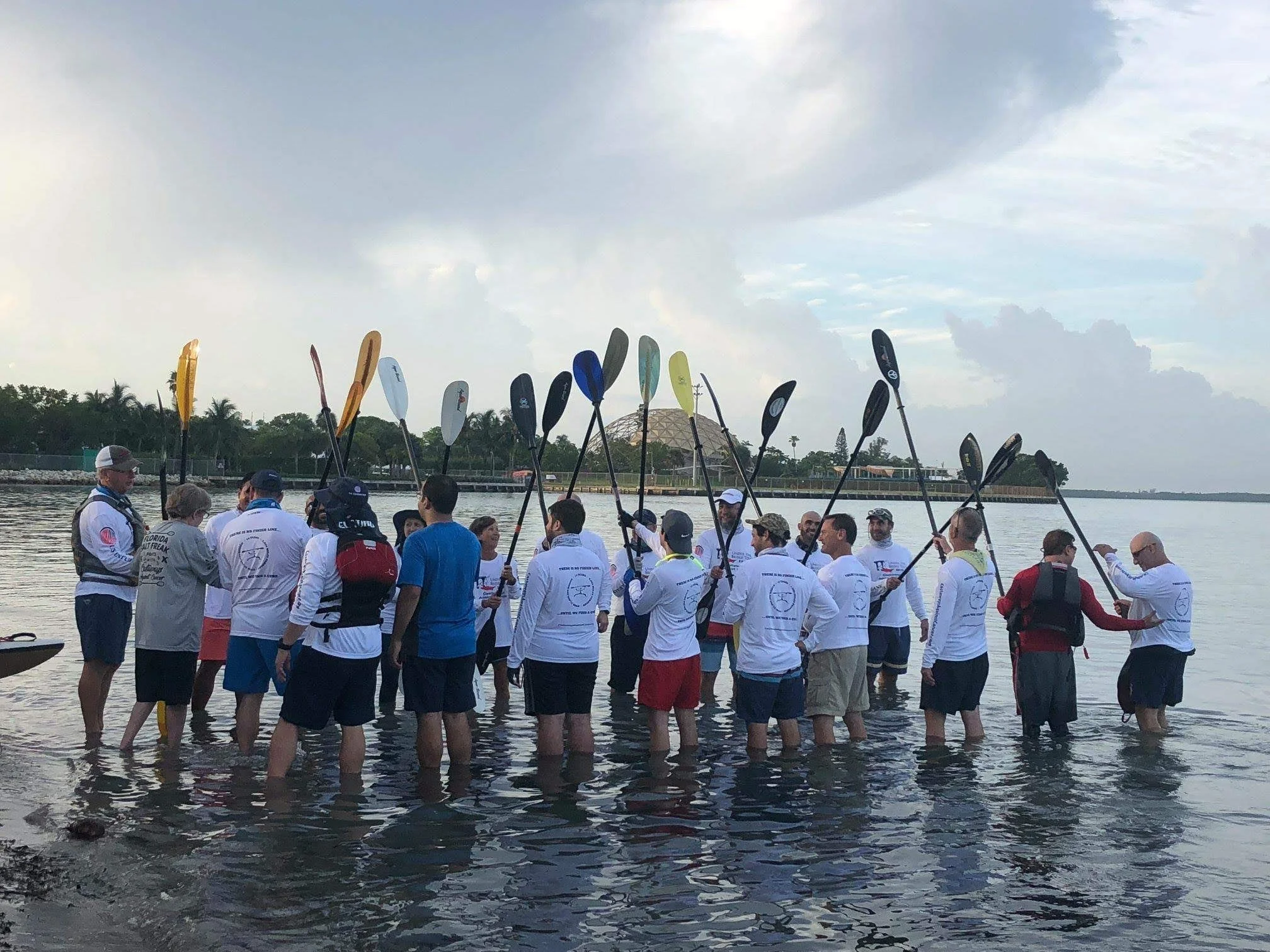
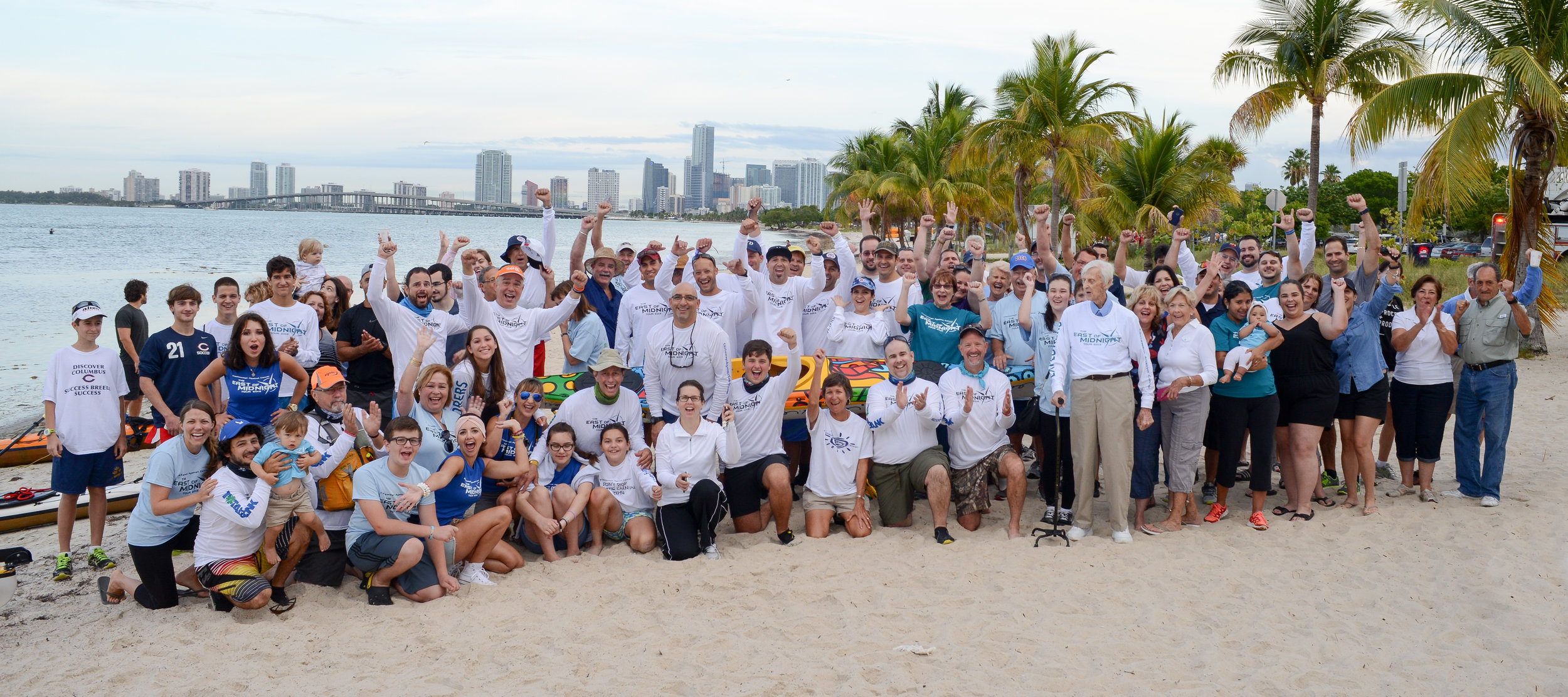

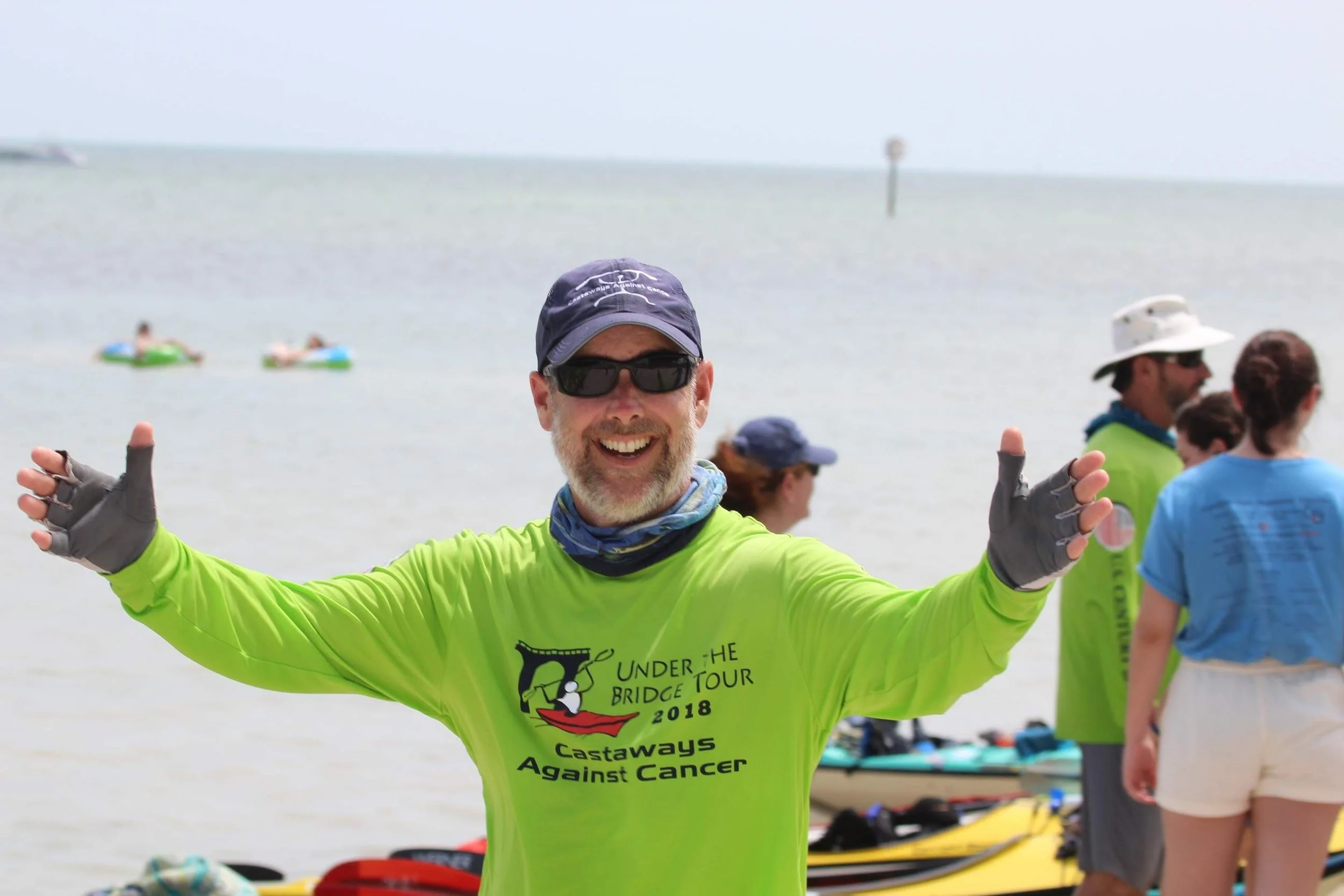
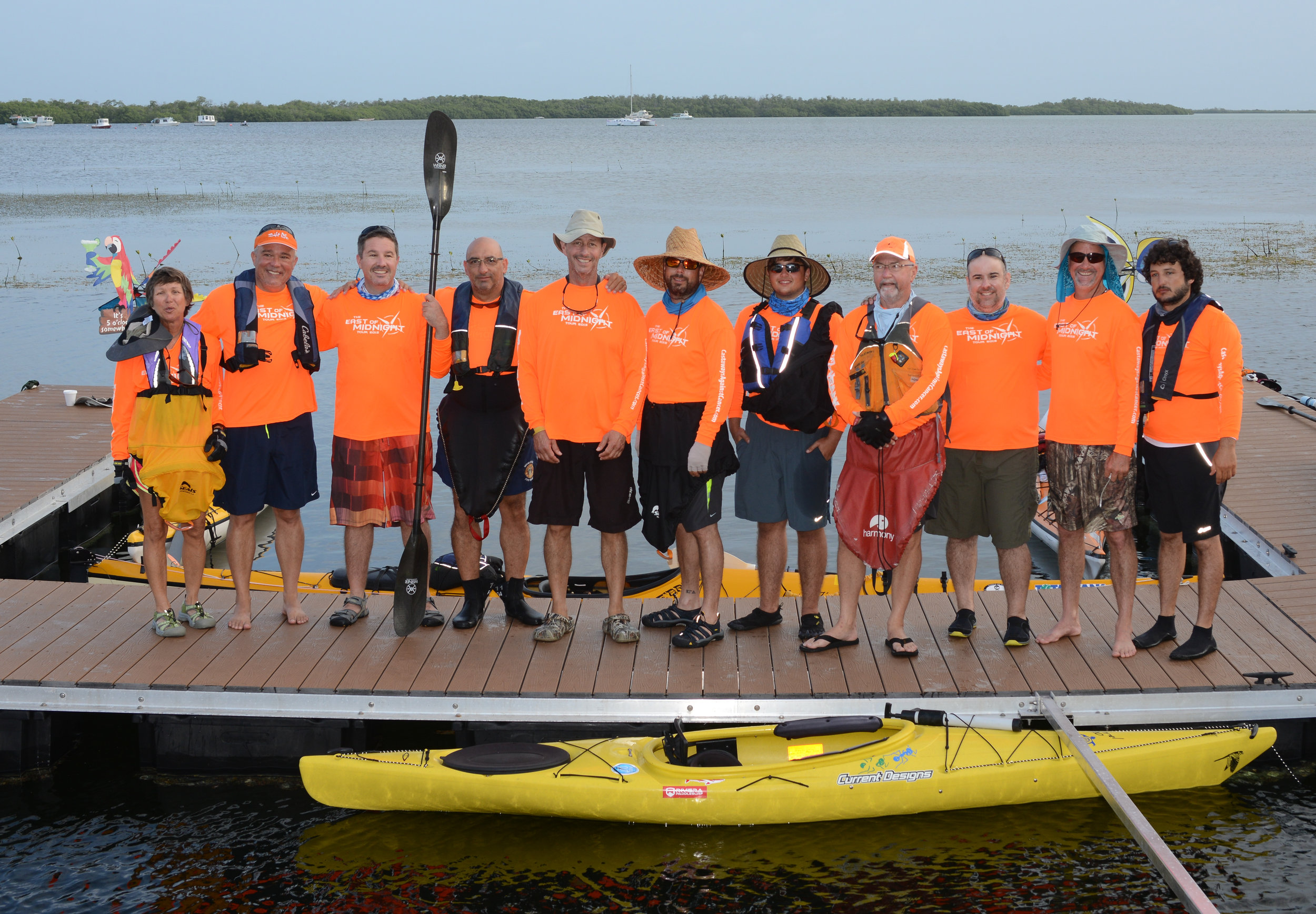
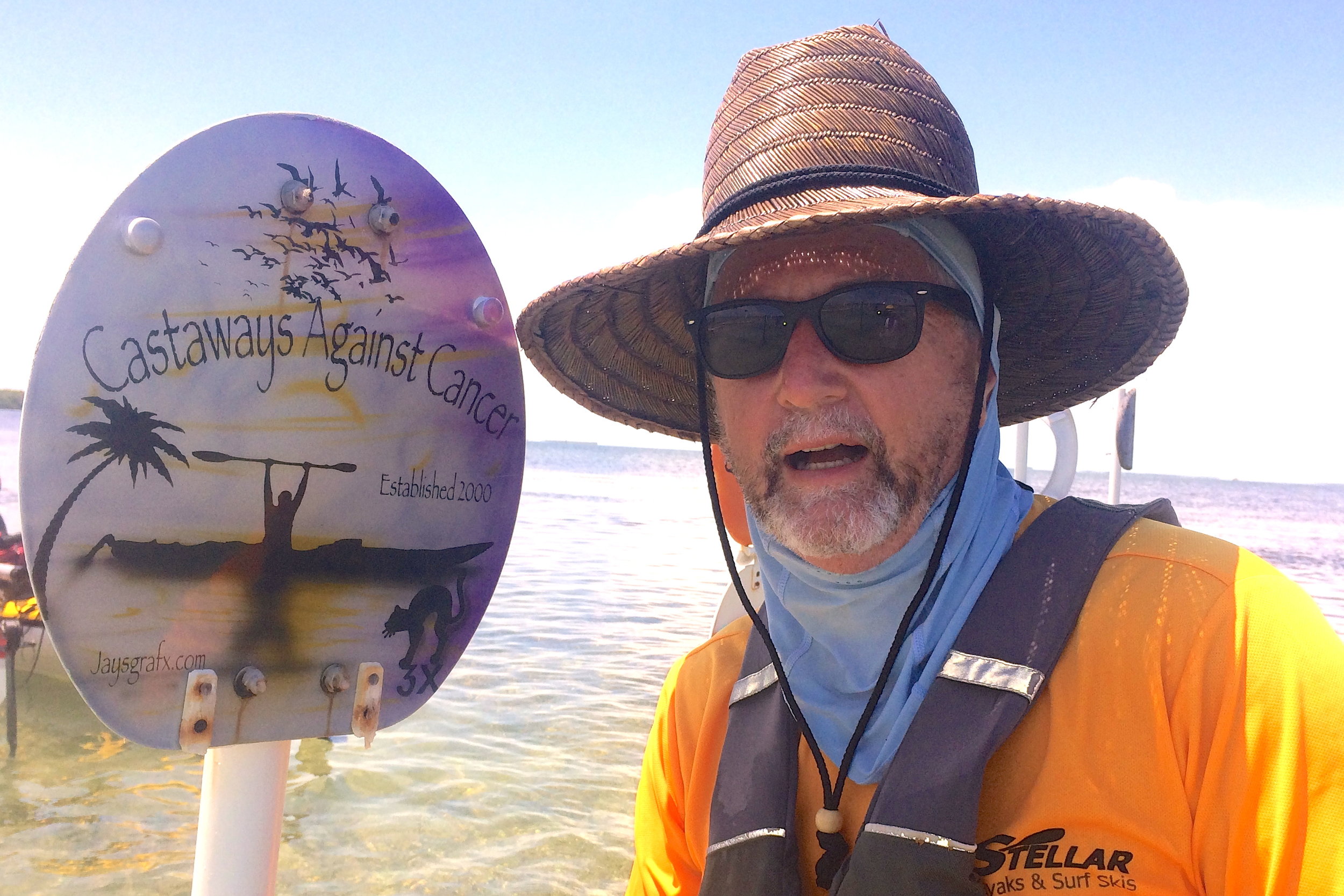

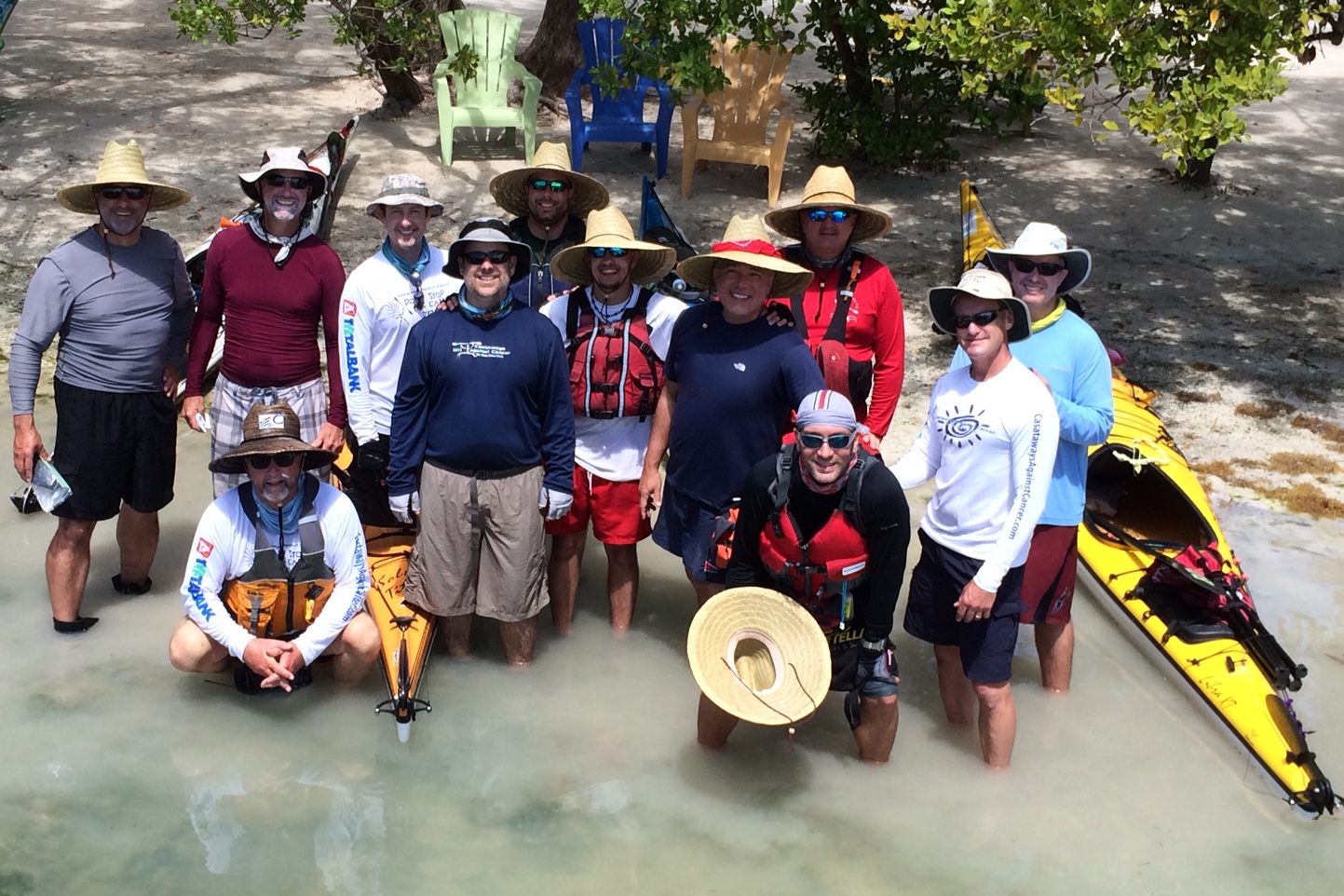


FREQUENTLY ASKED QUESTIONS
How did this all begin?
It began as one man and a dream. A complete history of the Castaways and how it all began can be found here.
Are you a non-profit?
Yes, we are! As of February of 2020, The Castaways Against Cancer is officially a 501(c)(3) organization. We are, in the simplest terms, a nonprofit that fundraises for great organizations like the University of Miami’s Sylvester Comprehensive Cancer Institute.
Where does the money go to?
Since 2020 we have been partnered with Sylvester Comprehensive Cancer Center of the University of Miami Health System who matches every dollar we donate to them. Through our partnership, we get to direct the money to fund specific research projects that speak to us and our supporters. For more info as to what we’ve done in partnership, click here.
Why do the same trip over and over each summer?
“No man ever steps in the same river twice, for it is not the same river and he is not the same man.” --Heraclitus
How did the cycling branch of the Castaways come to be?
Steve O’Brein’s (OB) vision for the Castaways started with a kayak paddle to Key West. In 2020 however, the cycling branch of the Castaways was born when Javi Hermida proposed an equally grueling journey. Javi, a former student of OB and coworker at Christopher Columbus HS, rallied a few friends to join him on the 170-mile ride. Unsure of his ability to complete the tour, Javi did much of the trip with little fanfare. As a matter of fact, after landing in Key West, Javi and his 3 teammates grabbed a sandwich and beer and then headed back to Miami. In 2021, we are much more organized (we even have uniforms) and have built out the team to help further the Castaway mission.
How did the running branch of the Castaways come to be?
In 2023, our Ridiculous Stunt Tour, the team went full throttle on the ridiculous by welcoming their first 2 ultra-marathoners. Vince Yllanes, Pino’s former Cross Country runner, reached out to him to inquire about getting involved with some sort of a long-distance run. After a few conversations, Vince thought it feasible to run Miami to Key West (the same route as the cyclist) with 1 relay partner. Paige Douglass, a cancer fighter and Cancer Rehabilitation Specialist, answered the call and said yes just by checking out the website. 85 grueling miles each. Non-stop. 15-20 hours of running each. A straight-up ridiculous stunt indeed. What could go wrong? We’ll find out in 2023.
How can I join you the Castaways?
Quite possibly our most often asked question. It makes us very excited to have so many of you want to pick up a paddle and join us in our fight. Currently, we are not actively recruiting new paddlers as we are limited to the number of people we can squeeze into hotel rooms. Additionally, there is a safety concern of keeping a team of 12+ kayakers together on the water and maintaining a manageable peloton on the street. We are always looking for fundraisers, however. If you are interested in being considered as part of the team, whether on land, in the saddle of a bicycle, or full-length paddler, please click here.
How far do you paddle each day?
We paddle roughly 160 miles. That breaks down to:
Day 1 - 22.3
Day 2 - 27.0
Day 3 - 21.4
Day 4 - 26.1
Day 5 - 22.2
Day 6 - 20.6
Day 7 - 18.4
How long does that take to paddle that distance?
It depends on the weather - if wind, waves, and currents are with us or against us. But our days run from 8 to 14 hours on the water (with breaks, of course).
How long does that take to cycle 170 miles?
10 hours moving time (13 hours total). 5 scheduled stops along the way. We average just under 20 mph.
How long does that take to run 170 miles?
Vince thinks it’ll take him about 20 hours and Paige will be around 15 hours. Paige just ran 50 miles at 9 minutes per mile pace in February 2023
Do you sleep on the boat? / Where do you sleep?
At the end of the day, we do stop on dry land. In the early years, we would camp just about every night. Over the years we have acquired sponsors that have graciously donated hotel rooms for us to stay in at night. We currently only camp one night (on Elliott Key or Homestead Bayfront Park) and subsequent nights are all in hotels.
How do you prepare for these endurance events?
Paddler preparation: To prepare physically, many of the team spends a great deal of time on the water paddling to develop the necessary endurance. Some actually have gym memberships where they practice core and upper body workouts. But in the end, this journey is more mental than physical, so we listen to Bob Linfors lectures.
Cyclist preparation: To prepare physically, many of the team spends a great deal of time on the saddle to develop the necessary endurance. To conquer 170miles you just need to be comfortable being uncomfortable on the bike
Runner preparation: To prepare physically, you log some serious miles and partake in some insane races. It’s not only logging the miles, but also miles in the HEAT and TIRED legs (30mi one day followed by 10 the next). This run will be done in June… in FLORIDA! That’s the real challenge for me!
Do the paddlers have a chase boat?
No. Our crew does not depend on a chase boat for supplies or emergencies. We do, however, have a Road Crew that follows us through the Keys. They travel ahead of the team and check-in at our various destinations. They also pick up various items like water and sports drinks to replenish our supplies so we don't have to carry a week's worth of Gatorade and water.
Do the cyclist have a support car (SAG)?
We’ll have 3 support cars doing shifts during the ride in case there is an emergency or we need to fix a flat.
Do the runners have a support car?
We’ll have 1 support car per runner, leap-frogging them throughout the entirety of their run for mental support as well as to make sure they stay fed and hydrated.
How do you go to the bathroom?
Paddler experience: Some things will just have to remain a mystery. For now, we'll say... very carefully.
Cyclist experience: We can say we “just go” but the reality is we just pull over… Want a better answer? Ask the paddlers what they do…
Cyclist experience: Find a bush but if you ever want to test your multitasking skills try peeing and running at the same time adsfvddfadsf. It’s not a sprint it’s a marathon. Actually, an ultra-marathon so what’re an extra few minutes?
How far out to sea do you go?
Our route through the Keys takes us through back bays, channels, and out into the Atlantic. The furthest we ever get from land is only a couple of miles. However, on the first day of the journey, we are actually five to ten miles from any help or civilization.
What type of kayaks do you have?
While the brands and styles differ (wood, polyethylene, fiberglass, and Kevlar), the team paddles open water closed cockpit touring kayaks (18' - 22' long). Popular makes are Current Design and Necky.
What type of bikes do you have?
While the brands and styles differ (aluminum, carbon fiber, gravel bikes), Canyon, Cerevelo, Specialized, Cannondale are all well-represented brands used by the team.
What type of shoes do you run in?
New Balance 1080s and Brooks Adrenaline are their go-tos during long runs and races.… Just stick to what works!
What hurts the most?
Paddler experience: Depends on the kayaker. Some say shoulders, some say lower backs, some say hands, but it is safe to say everything. Some days everything hurts. The pain continues days after the journey ends.
Cyclist Experience: Our egos! Our legs, our posteriors (the padded shorts could use more padding), and our backs of course!
Runner Experience: Paige: Either my stomach or my mind! I have an insanely sensitive stomach, which always makes long races interesting. After 7 or 8 hours I want nothing to do with food, but I have no choice but to shove those carbs down. At mile 48 this past weekend, my crew handed me 4 girl scout cookies to help me get out of my “bonk”, lol. Otherwise, PB&J’s are the way to go. Running for that long is definitely a mind $%^@—the mind gives up quicker than the legs do! Vince: After several hours my hips and knees feel like that of a 90 year old. I experience GI issues too so I really have to play it safe with what I drink & eat to avoid vomiting.
Why do we see the team salute with their left hand?
Your left hand is closest to your heart and your right hand should be holding a drink. That’s at least what we learned from the Conch Republic Navy.
In 2004, a meager team of six Castaways crashed ashore on Key West and was recognized for its efforts by the Conch Republic Navy (CRN) by being inducted into their ranks.
In 2011, the CRN realized that the team of misfits that invaded their waters each summer for over ten years was not giving up the fight and gave the Castaways the official designation of: Flotilla of the Northern Territories.
The Castaways are proud to be a part of the Conch Republic Navy. Our beliefs are the same in that despite adversity, you fight with all your heart, you honor those who stand up for what is right, and a little humor might just see you through it all.
